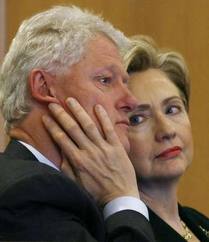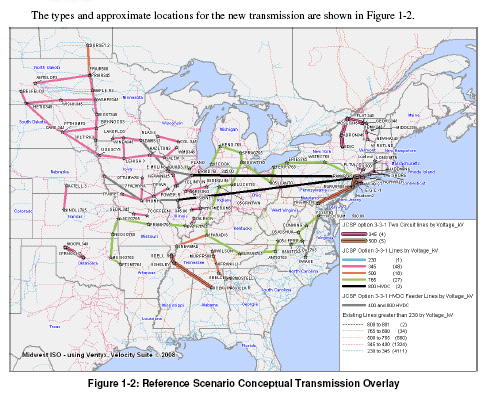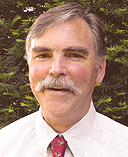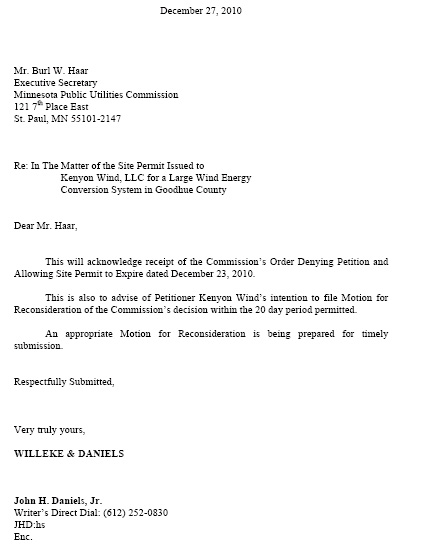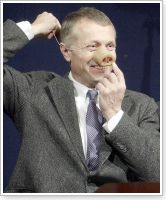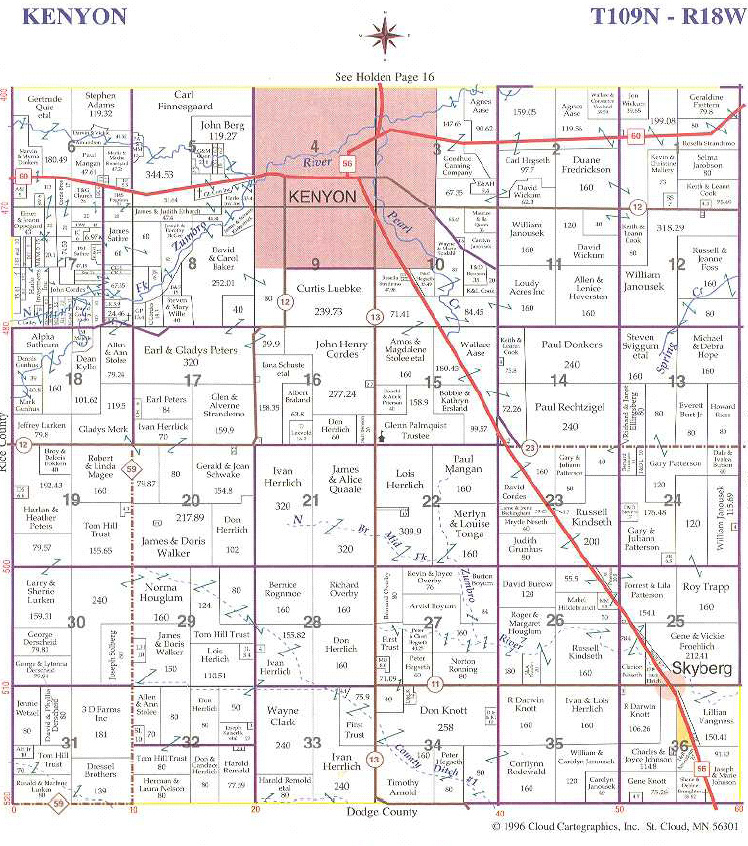March 9 – PUC rulemaking Ch. 7849 & 7850
February 24th, 2017
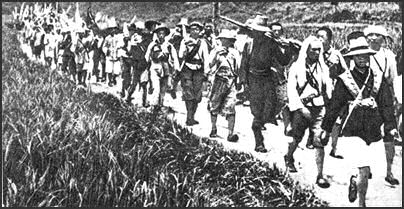
Yes, it’s been a long march. We’ve been slogging through for years — this Public Utilities Commission rulemaking began in 2012. We’ve been going to these PUC sponsored Advisory Group meetings, holding our own small group and public meetings about these rules, reviewing and commenting, and by we, I’ve been joined by Suzanne Rohlfing, of North Route Group (CapX 2020 intervenor group in Hampton-La Crosse docket) and Marie McNamara, of Goodhue Wind Truth (intervenor group in Goodhue Wind/AWA docket) who have hung in there all these years. So early next month, we’re going before the Commission with the draft rules. Four plus years! It’s about time!
We sorely needed rulemaking, there were major statutory changes in 2005 (2005 Session Laws Ch 97 – Transmission Omnibus Bill from Hell), and substantial holes in the process, which all came out in the CapX 2020 Certificate of Need and Routing dockets (CapX 2020 is why the 2005 statutory changes were rammed through, to facilitate Xcel’s transmission dream). I’ve filed a few Petitions for Rulemaking to push these forward, the one below was 2011!
And we’ve been working on rules for Minn. Ch. 7849 and 7850 for over four years now. The docket was opened and first Comments solicited in December 2012. Finally, this Notice yesterday, that the drafts that will go to the Commission:
And notice of the Commission meeting issued today!

To look at the docket, go to the PUC SEARCH PAGE and search for docket 12-1246. I’ve posted links to the drafts on this docket. It’s important that the public be able to review what’s gone on over the last four years!
And after this, wind rules, Minn. Rules Ch. 7854, are next! Yes, PUC, we will hold you to this!
Bill Clinton toadying for transmission
December 13th, 2012
In Chicago, Bill Clinton calls for national grid to boost renewable energy.
Yes, it’s all connected…There goes Clinton promoting transmission that enables coal.
We all know Bill Clinton has his warts:
But did you know that yesterday Clinton exhibited a major outbreak of warts as a transmission toady for Obama?
And we all know Obama loves transmission and declared seven transmission projects for “accelerated permitting and construction” including two of “my” projects, the PSEG Susquehanna-Roseland line and Xcel’s CapX 2020 Hampton-Rochester-LaCrosse line. I’ve posted a few times about this:
Obama “fast tracks” transmission?!?!?!
Obama’s Transmission BS in the News
What does Obama’s Xmsn push mean?
Here’s the plan in the Midwest — check out the blue solid lines and dashed lines:
… and it gets worse:
These JCSP lines are in the MTEP 11 Appendices, 765kV lines across the Midwest:
But do you know the level of toadyism and sell-out of so called “environmental” groups that made this transmission build-out possible? Transmission is just one of the legacies of the Izaak Walton League (and its program “Wind on the Wires”), Fresh Energy, Minnesota Center for Environmental Advocacy, and North American Water Office. There’s also coal gasification, burning turkey shit, and rolling for nuclear power in a deal to stick nuclear waste in Florence Township and taking the money for compensation of the Prairie Island Indian Community and shift that into the Renewable Energy Development Fund, Community Based Energy Development (C-BED) legislation that gave House Speaker Steve Sviggum a turbine and substation on his land in the first C-BED project applied for (and thankfully failed). Gee, thanks for all of this and more from Minnesota’s “environmental” organizations over the years… the 1994 Prairie Island deal, the 2002 Transmission deal, the 2003 Prairie Island deal… it makes me ill. Who do they think they are to make these deals, who are they representing? Not the people! Not the public interest!
Here’s some primary documentation:
$8.1 Million to Wind on Wires – grant from McKnight/Energy Foundation
$4.5 Million to Wind on Wires – grant from McKnight/Energy Foundation
2005 Session Laws Chapter 97 Transmission Omnibus Bill from Hell
Bill Grant – Sawmill Presentation – Promotion of Coal Gasification
Presentations at IEDC (Legalectric – posted February 16th, 2007)
IEDC gets carried away (Legalectric – posted February 15th, 2007)
You might think this is old news, but it’s not, it’s got an impact right now, an impact felt by the thousands of landowners whose land is being condemned right now for CapX 2020 transmission routed over their land. Why? Well, just after Mark Dayton won the election in 2010, the Waltons and Wind on the Wires did a spin off (note their numbers don’t match), separating the two, that’s just after the election, and just before Gov. Mark Dayton announced the Walton’s Bill Grant would be the new Deputy Commissioner of Dept. of Commerce in charge of Energy Facilities Permitting.
And “Wind on the Wires” IRS 990s:
Wind on the Wires 2009 IRS Form 990 (signed 11-12-10, a week after the election)
Wind on the Wires 2010 IRS Form 990 (signed 11-14-2011)
How could anyone be more unsuitable for a position heading the state Energy Facilities Permitting department at Commerce?
Here’s the article in its entirety for posterity — from Midwest Energy News, brought to us by (buy) RE-AMP!
In Chicago, Bill Clinton calls for national grid to boost renewable energy
“Look what happened to civilizations that had their day in the sun and then declined,” he said. “Progress is a long road, a lot of rolling big rocks up steep hills.” Read the rest of this entry »
Bluster blather from Kenyon Wind
December 31st, 2010
Oh, man, I am really scared now!!! See something new every day… John Daniels has filed the following “Notice of Intent” letter on behalf of Kenyon Wind, LLC:
EH? Oh, OK, ja, sure, whatever… I’ll just shake and quake in my boots until the Motion for Reconsideration is really filed… Notice of Intent? WTF? Never seen one of those before!
 …. yawn….
…. yawn….
Remember, Kenyon Wind was the first C-BED project out of the chute, oh, excuse me, not THAT C-BED, but THIS C-BED, the statute. Kenyon Wind was a wind project promoted by the principals of non-profit Windustry, and Kenyon Wind was the wind project that planned to put a turbine and substation on former Speaker Steve Sviggum’s land (see Section 13 on the R)…
…and I’m sure you all remember how helpful the Speaker was in passing the 2005 Chapter 97 – Transmission Omnibus Bill from Hell that gave birth to C-BED and gave the utilities everything they every wanted and more to be able to go forward with CapX 2020 transmission criss-crossing the state with transmission for export:
In the meantime, see the following (the one posted just above this) post on how it’s done. Todd Guererro, on behalf of AWA Goodhue Wind, has filed one even better, a Notice of Motion and Motion for Summary Disposition. Yup, AWA Goodhue Wind has a disposition problem all right!
Minn. Stat. 117.189 Legislative History
August 6th, 2009
This is one of those things that’s been bugging me for a long time, and I’m finally getting around to looking it up. There are a few twists and turns, and this is a long post, with a lot of links and a lot of audio listening for you to dig in if you’re interested. If you’re a landowner, you sure better be! If you’re a landowner affected by utility infrastructure, this is required reading and listening!
Here we go!
History of Minn. Stat. 117.189
Here’s the statute (the specific statutory cites below are linked):
117.189 PUBLIC SERVICE CORPORATION EXCEPTIONS.
Sections 117.031; 117.036; 117.055, subdivision 2, paragraph (b); 117.186; 117.187; 117.188; and 117.52, subdivisions 1a and 4, do not apply to public service corporations. For purposes of an award of appraisal fees under section 117.085, the fees awarded may not exceed $500 for all types of property.
History:
Short version – this bill was a bipartisan sell-out that exempted CapX 2020 and any other public service corporation project from eminent domain that every other entity must comply with. Why on earth would they do this… or rather, what innocent explaination is there for this 117.189 section of the bill?
So far that I’ve heard (only ~6 hours thus far), Sen. Scott Dibble is the only one asking “Why exempt public service corporations?”
The only Senators who voted against this were:
Anderson, Cohen, Dibble, Hottinger, Marko, Moua, Pappas, Ranum, Skoglund
The only Reps who voted against this were:
Davnie, Ellison, Goodwin, Hausman, Hornstein, Huntley, Johnson, S., Kahn, Lanning, Lenczewski, Mahoney, Mariani, Mullery, Paymar, Thao, Wagenius, Walker
Please take a few minutes and send them a thank you note! Here’s a link to their emails:
*****************************************************
First, some more history, going back to my all time favorite bill:
Remember, this was the bill that grew from the deal the enviros did in 2003, incorporating the material terms of that deal into the 2005 Omnibus bill.
And… why… look, there’s language in the 2005 Transmission Omnibus Bill from Hell mandating an “Eminent Domain Landowner Compensation — Landowner Payments Working Group!”
55.35 ARTICLE 1155.36 EMINENT DOMAIN LANDOWNER COMPENSATION56.1 Section. 1. [LANDOWNER PAYMENTS WORKING GROUP.]56.2 Subdivision 1. [MEMBERSHIP.] By June 15, 2005, the56.3 Legislative Electric Energy Task Force shall convene a landowner56.4 payments working group consisting of up to 12 members, including56.5 representatives from each of the following groups:56.6 transmission-owning investor-owned utilities, electric56.7 cooperatives, municipal power agencies, Farm Bureau, Farmers56.8 Union, county commissioners, real estate appraisers and others56.9 with an interest and expertise in landowner rights and the56.10 market value of rural property.56.11 Subd. 2. [APPOINTMENT.] The chairs of the Legislative56.12 Electric Energy Task Force and the chairs of the senate and56.13 house committees with primary jurisdiction over energy policy56.14 shall jointly appoint the working group members.56.15 Subd. 3. [CHARGE.] (a) The landowner payments working56.16 group shall research alternative methods of remunerating56.17 landowners on whose land high voltage transmission lines have56.18 been constructed.56.19 (b) In developing its recommendations, the working group56.20 shall:56.21 (1) examine different methods of landowner payments that56.22 operate in other states and countries;56.23 (2) consider innovative alternatives to lump-sum payments56.24 that extend payments over the life of the transmission line and56.25 that run with the land if the land is conveyed to another owner;56.26 (3) consider alternative ways of structuring payments that56.27 are equitable to landowners and utilities.56.28 Subd. 4. [EXPENSES.] Members of the working group shall be56.29 reimbursed for expenses as provided in Minnesota Statutes,56.30 section 15.059, subdivision 6. Expenses of the landowner56.31 payments working group shall not exceed $10,000 without the56.32 approval of the chairs of the Legislative Electric Energy Task56.33 Force.56.34 Subd. 5. [REPORT.] The landowner payments working group56.35 shall present its findings and recommendations, including56.36 legislative recommendations and model legislation, if any, in a57.1 report to the Legislative Electric Energy Task Force by January57.2 15, 2006.
Now, let’s take a look at who was on that Committee:
REPRESENTATIVE MEMBERS
1. Jim Musso (Xcel Energy) representing transmission owning investor-owned utilities
2. Bob Ambrose (Great River Energy) representing electric cooperatives
3. Mrg Simon (Missouri River Energy) representing municipal power agencies
4. Chris Radatz-representing the Minnesota Farm Bureau
5. Tim Henning (farmer) representing the Minnesota Farmers Union
6. Jack Keers (Pipestone County Commissioner) representing county commissioners
7. Robin Nesburg (Rural Appraisal Services) representing real estate appraisers
AT LARGE MEMBERS
8. Beth Soholt (Wind on the Wires)
9. John Nauerth III (farmer)
10. George Crocker (North American Water Office)
11. Bob Cupit (Public Utilities Commission)
12. Bill Blazar (Minnesota Chamber of Commerce)
Here’s the report of the Work Group:
LANDOWNERS’ PAYMENTS WORKING GROUP
REPORT TO THE LEGISLATIVE ELECTRIC ENERGY TASK FORCE (LEETF)
Laws 2005, chapter 97, article 11, required the Legislative Electric Energy Task Force (LEETF) to create a landowners’ payments working group to study alternative methods of remunerating landowners on whose land high-voltage transmission lines have been constructed.
The group was created, met twice, and this is a report of its findings and recommendations.
LANDOWNER PAYMENTS GROUP FINDINGS
1. Farm owners in southwestern Minnesota want compensation for high-voltage transmission line easements to be paid annually as a percentage of the current value of the land so that as land values rise or drop, the payments rise or drop accordingly.
2. Easement acquiring utilities are not in favor of the proposal described in item #1 and do not want to fundamentally change the current method of payment for easements, which consists of a onetime payment based on a percentage value of the land over which the easement is acquired.
3. The Legislature has the authority to mandate the payment system described in item #1.
4. There are no jurisdictions that have the payment system described in item #1.
5. The payment system described in item #1 would be more expensive than the current payment system, assuming the percentages proposed by the landowners with attendant upward pressure on rates.
6. There is a social value to having a harmonious, nonadversarial process to acquire high-voltage transmission line easements that has an economic value that is hard to quantify.
7. There is a sense that the process for negotiating an easement and/or contesting it by a landowner is too expensive and complicated and it may be helpful to search for legislative ways to ensure that all similarly situated landowners receive the same just compensation without being intimidated by the process or forced to great expense by the process.
8. While this group was formed due to farm landowner concerns, the scope of the charge extends to all landowners. Guidance from the task force is necessary as to the scope of the charge because the scale of the issue is altered if any easement over any land is the subject of the discussion.
9. While the direct parties in interest–the landowners and utilities–are stalemated, the current push to acquire easements for new lines makes the issue one that should have a firm handle kept on it.
RECOMMENDATIONS
1. If further work is to be done on this topic, the task force should provide the guidance described under finding #8.
2. If the task force wants to continue work on this topic and wants more public input, it should consider utilizing the same persons who are on the current study group.
3. The task force may wish to consider whether there are flaws in the current easement acquisition process related to its expense to landowners to contest and perceived intimidating qualities.
*****************************************************
Let’s look at the eminent domain bills the following session, Senate bill, SF 2750 and the House bill, HF 2846.
SF 2750
Senate Authors, none added after introduction: Bakk ; Kiscaden ; Bachmann ; Chaudhary ; Kubly
Bill as introduced, had the Public Service Corporation exemption AND the appraisal fee limitation:
On the Senate side, there are some interesting statements in the first Committee hearing, Judiciary, discussion about limiting who can speak at county meetings about eminent domain (!!!), limitations of attorneys’ fees… and there’s a discussion that I’m trying to transcribe … will post soon…
Senate Judiciary – March 9, 2006 – PART I
Senate Judiciary – March 9, 2006 – PART II
Senate State and Local Government Operations – March 13, 2006 – Part I
Senate State and Local Government Operations – March 13, 2006 – Part II
Here’s Sen. Dibble questioning, in State and Local Government Operations – March 13, 2006 Part I (linked):
Senate State and Local Operations Committee
Chair: We’ll ask Senator Bakk to address this question.
*****************************************************
HF 2846
As introduced it had the Public Service Corporation exemption:
*** The sentence about appraisals did not appear in it as introduced or in the 5 engrossments online.
Here’s the House Research explanation of that paragraph:
12 Public service corporation exception. Provides that the provisions for attorneys’ fees (section 4 ), compensation for loss of going concern (section 8 ), minimum compensation (section 10 ), and limitations (section 11 ), do not apply to public service corporations.
*****************************************************
Conference Committee
04/12/2006 Senate conferees Bakk, Murphy, Betzold, Higgins, Ortman
04/12/2006 House conferees Johnson, J.; Abrams; Davids; Anderson, B.; Thissen
*****************************************************
Here are the reports of House and Senate adoption of Conference Committee Report, including votes:
